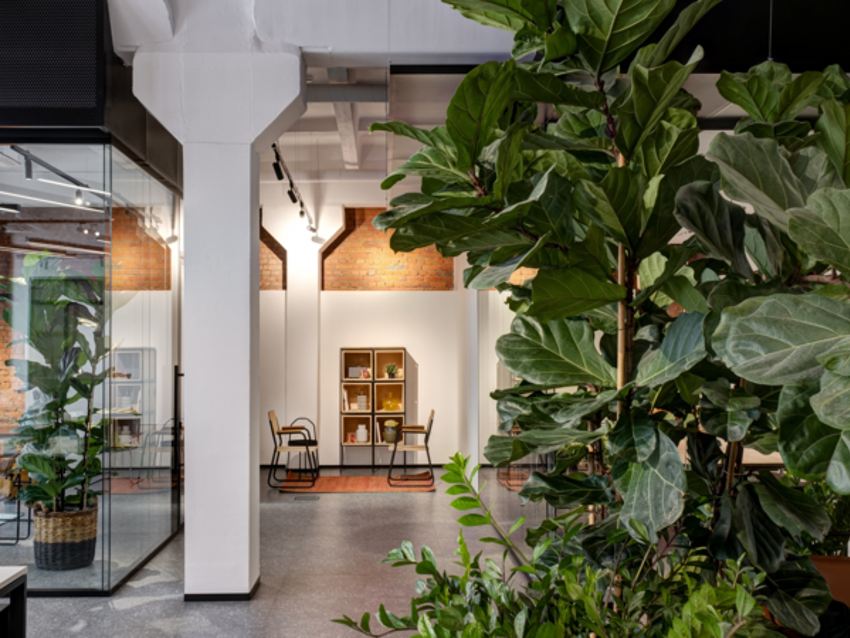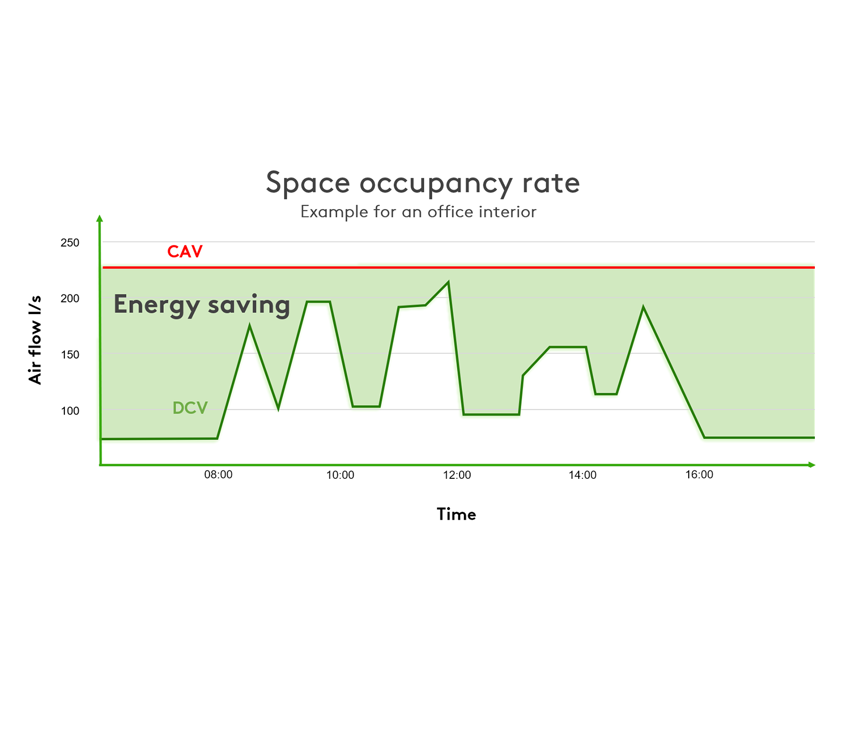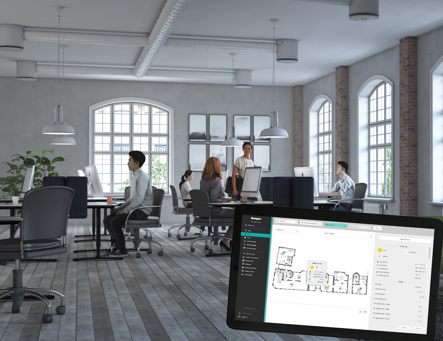Museums and libraries as examples of how to handle humidity indoors
This is one section in our public buildings guide where museums, libraries and the like are used as examples when we share our knowledge about the indoor climate factor of humidity. The information and recommendations given should be seen as food for thought, while the wide array of links will enable further deep dive on the topic.
Is humidity a forgotten indoor climate parameter?
Humidity is rarely a common topic in indoor climate discussions. If it is brought up, it is generally in negative terms about mould and other building related issues. But the fact is, the problem with humidity is in many cases the opposite, the indoor climate is quite often too dry in well ventilated buildings.
Cold outdoor air is dry. In regions such as the Nordics, eastern Europe and on higher altitudes, chilly and dry weather can be the reality for several winter months in a row. Ventilation not considering humidity is during this season bringing very little humidity in, while it extracts the minimal moisture that the indoor air contains. Problematic when aiming for a healthy and comfortable indoor climate.
See our indoor climate guide for more about humidity
Not too dry, not too humid, and nearly no fluctuations
During the time of the pandemic many learnt that viruses spread easier in a dry environment. However, dry indoor air can cause other health issues too, such as dry eyes, arid throats and chapped lips. Low levels of humidity also cause dust and allergens to easier get airborne and spread throughout an indoor space.
It is though not only peoples' health and well-being that is dependent on a moderate humidity level, also fine art, historic findings and stuffed animals in museums and libraries are sensitive to too high or too low humidity levels. Older paint and books, skin and textiles are in fact so delicate, they require a stable humidity level to not crackle or warp, desiccate or rip.
So, what to consider in a solution for a museum?
First of all, it is important to recognise that a museum or library is more than just an exhibition or shelf meters. There are most likely offices, and perhaps a gift shop and a restaurant or cafe. These spaces will have different indoor climate requirements to meet the needs of the people working in or visiting the building.
Secondly, a museum or library probably faces a farily even activity level inside. People are coming and going during the opening hours which means that excess capcities for ventilation or temperature is perhaps not needed in the same way as in the example of a concert hall. However, the challenges for these buildings are the daily and seasonal variations in weather conditions, which should only vary slowly and marginally.
Interested in the HVAC characterstistics of a concert hall?
Visit our guide about indoor climate in offices
Physics dictates indoor air humidity
The air's capacity to hold moisture is dictated by physics in the way that it is influenced by the temperature. Warm air can hold more moisture which leads to higher humidity levels, while cold air retains less moisture. This interdependence is normally shown in a Mollier diagram.
Before making a deep dive in Mollier diagrams, it can be worth to know that humidity influences the perceived temperature too. For example, a high humidity level and a moderate temperature can feel much warmer than what the thermometer states. On the contrary, a low humidity level can make the air feel cooler than it actually is.
Temperature requirements and heat loads can differ vastly among museums and libraries depending on the artwork, building materials and where in a building a delicate exibition or book collection is located. Our recommendation is to find a reliable and experienced partner for this kind of project, contact us at Swegon for instance.

For art, books and people to feel good inside
Humidity optimisation
To create an indoor climate that ensures the care of displayed art, historic books, stuffed animals and frail archaeological objects, humidity has to be considered an asset rather than a problem. We therefore recommend careful and well thought through humidity optimisation, an energy efficient alternative to active humidification.
Before we go into any details, it may be worth to know that natural materials are significant parameters for the indoor climate as they can even out and balance fluctuations in temperature and humidity. Having that said, museums and the like, built in wood or furnished with lots of greenery, should consider the natural materials' impact on the indoor climate while in the design phase of a solution.
Humidity recovery
Humidity recovery utilising the indoor climate solution's air handling unit (AHU) allow for the indoor moisture to be reused 3-10 times before it is extracted from the building. In combination to using active humidification, this is both an energy and cost efficient method, and it reduces the need for cooling power.
Air handling units with rotary heat exchangers are especially good alternatives in regions with colder climates. When choosing a sorption treated rotary heat exchanger it recovers humidity and transfers it to the opposite air flow. The direction depends on the outdoor climate conditions as well as the requirements for the indoor environment. The sorption coating technology allows for 70-90% humidity recovery.
To our range of air handling units
More about rotary heat exchangers and humidity recoveryIt then “dehumidifies”, reduces moisture precipitation and lowers cooling power needed. Energy efficient year round.Ulf Hörman, Business development manager at Swegon, on the heat exchanger's ability to handle the summer season's humid outside air.

Ventilation optimisation
The sorption treatment of the heat exchanger can be a first step towards humidity optimisation, but ventilation rates are key. Ventilation is important to ensure good air quality inside a building or space. It is at the same time, equally important not to ventilate more than there is a need for, especially not in the context of humidity. Demand controlled ventilation (DCV) adjusts ventilation, heating and cooling to the exact need inside the premises, and minimises the risk of extracting valuable humidity.
We said that a museum or library is thought of as a place with varying precense of people. We also said that it can be a place with nearly no acceptance for fluctuating humidity levels. With that in mind, our recommendation is to chose a thoroughly developed DCV system which operates according to defined set points for a range of indoor climate factors, humidity included. That way, the indoor climate will need minimal attention but still be able to deliver on challenging requirements.
Blog; Is demand controlled indoor climate a profitable investment
Get familiar with demand controlled ventilationHow to supply air
In both museums and libraries, visitors can be seated in front of a beautiful work of art, or with an intresteing book in their hands. It is important to ensure that they are not exposed to chilling draughts.
There is a wide variety of air diffusers and comfort modules on the market, our suggestion is to not only consider the initial layout or interior of the building, but to also think about future use scenarios. Adjustable units which are also easy to assign new tasks in a system solution for DCV, is what we would recommended. However, there are situations in which completely customised products are needed, see our reference case below.
Städel museum in Frankfurt, Germany
Energy efficiency is a highly relevant economic factor
In many building applications, it is possible to reduce the level of ventilation, heating and cooling when the building is used more sparsely. For sure, the building in itself has some needs in order to not be damaged, but the costly requirements are related to occupants and various activities taking place inside.
In a museum or library, the delicate pieces, dependent on stable humidity and temerature levels, stay in the building no matter the time or day. A vast reduction in ventilation, heating and cooling is completely unthinkable, but there are ways to ensure an energy efficient operation while not compromising the indoor climate. See our energy efficiency guide for more.
To the guide
Explore further
Below are a set of links that will take either take you straight to our products or to further knowledge sharing material.



